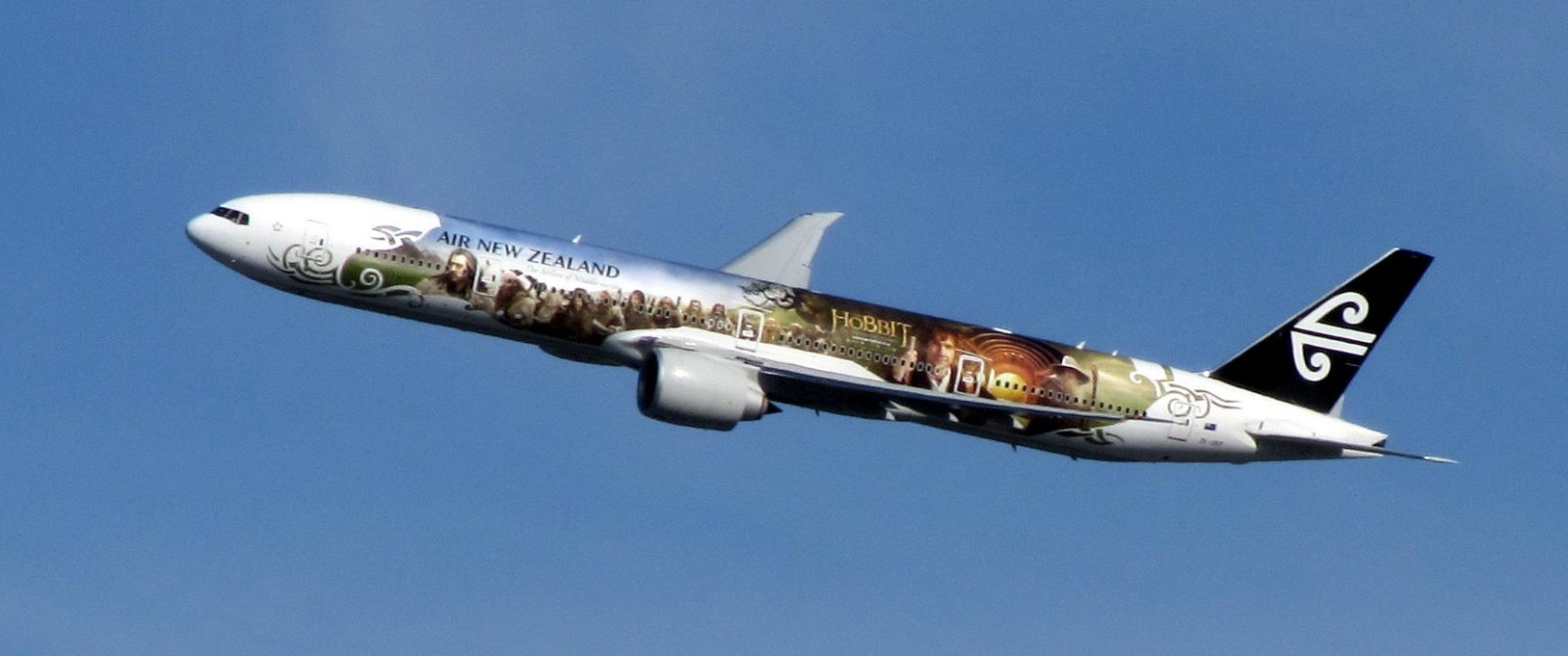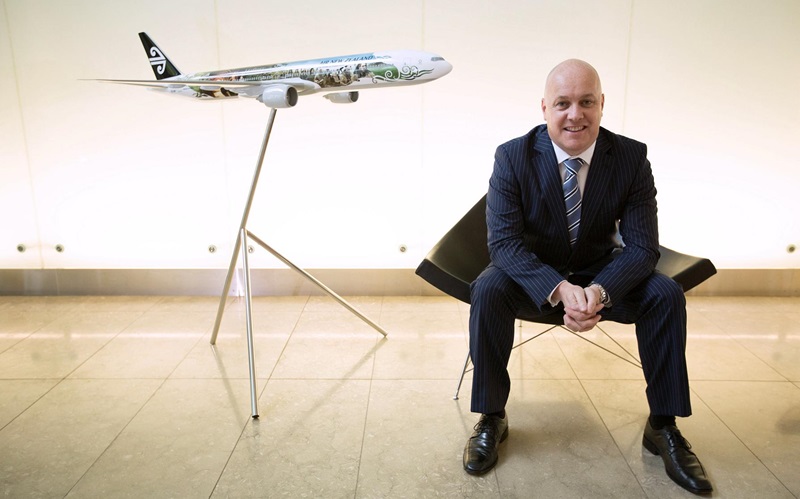One concurrent theme in our interviews with place brand professionals so far is that – especially in the case of destination branding and marketing – success depends on the active collaboration among key tourism operators and stakeholders. As brand ambassadors, national carriers (airlines) play a particularly important role, since often they are the first experience a traveller or tourist has of a particular country or destination.
Christopher Luxon, CEO of Air New Zealand, tells us how the country’s award-winning airline collaborates with Tourism New Zealand Marketing.
Learn about:
- Why the success of Air New Zealand and New Zealand as a country are inextricably linked;
- The role Air New Zealand plays in the country’s marketing campaign, and regarding New Zealand’s brand promise;
- To what extent country-of-origin plays a role for flag carriers;
- To what extent Air New Zealand’s brand mojo is influenced by the country’s green reputation.
Christopher, before you joined Air New Zealand in 2011, you were President and CEO of Unilever in Canada. What made you come back home?
I grew up as a kid always wanting to be a business person in New Zealand, and yet we don’t have that many large corporations. I learned so much at Unilever spending 16 of my 18 years there overseas, that I wanted to come back and use my skills and abilities that had made me successful and hook it up to company that has a real mission and purpose to help a whole country be more successful. In doing so, I believe as a leader I can help model out to other New Zealand corporates what a world class company can look like, and be not just successful, but more importantly significant.
It is a tremendous responsibility to lead Air New Zealand, but such a real privilege and honour to do so too.
To what extent does country-of-origin play a role when marketing consumer goods, and how important is it for flag carriers, such as Air New Zealand?
It doesn’t matter as much in consumer goods, but for a flag carrier like Air New Zealand it’s very relevant. Firstly we seek ways to showcase the best of New Zealand to the world through our customer experience – through our food and wine, our in-flight entertainment, and our lounges.
Secondly, the success of Air New Zealand and New Zealand as a country are inextricably linked. Air New Zealand has become interwoven into the very fabric of kiwi life over the last 75 years. We’ve been there in the good times and the bad times, but we’ve always been there for New Zealand and New Zealanders – and always will be.
We play a critical role in supercharging our country’s success economically through tourism and trade, socially through our own people and supporting the communities we’re part of, and also environmentally through investing in nature and science. That’s fundamentally what we mean when we use the word ‘sustainability’.
New Zealand’s 100% Pure branding is no doubt one of the longest-running and commercially most successful destination branding and marketing campaigns worldwide. What role does Air New Zealand play in this regard?
We play a crucial role, both in supporting the marketing campaign, and helping New Zealand live up to the brand promise that it creates. We have a very significant partnership with Tourism New Zealand, and lead much of the destination promotion in international markets – our campaign leveraging the Hobbit film trilogy, including two in-flight safety videos and two Hobbit themed livery’s on 777 aircraft is a great example.

More recently we’ve had an increased focused on in-market sales execution – we know that the 100% Pure New Zealand campaign has created significant demand for travel to New Zealand, and it’s our job to convert that to actual behavior. We’re working hard to ensure New Zealand is well served from markets where demand exists, and this year alone we’ll open up new routes between New Zealand and each of Singapore, Houston and Buenos Aires.
In recent years, media and academics have expressed concerns about a growing gap between the ‘100% Pure’ brand promise and New Zealand’s lagging environmental performance. As the country’s flagship carrier, to what extent do you think corporate actions, e.g. biofuels tests, influence the country’s image and destination brand?
We absolutely believe we have a role to play in helping New Zealand live up to the 100% Pure brand promise, not just because of the reputational risk of poor environmental performance, but because it’s what New Zealanders expect, and it’s what we as a business expect.
Of course that starts with ensuring our own house is in order, and we’re working hard to make that the case, building a sustainability programme inherently linked to New Zealand’s environmental performance.
Aside from a range of operational activities and fleet investment aimed at reducing aviation emissions, we’re seeking to better leverage New Zealand’s abundant renewable energy supply through transitioning our light vehicle fleet and ground service equipment to electric wherever possible.
We’re also looking to align our offsetting programme to local organisations in a way that creates benefits beyond just a carbon sink. We were involved with biofuel test flights several years ago and we continue to work with the local sector to try and establish a supply chain within NZ.
A huge part of the environmental story for NZ is the rate of endangered animals we have – our wildlife evolved without the threat of mammalian predators and as such were ill-equipped to deal with animals like rats, stoats, cats and possums that arrived with the early settlers.

To help overcome this challenge we’ve formed a significant partnership with New Zealand’s Department of Conservation (DOC), supporting a range of biodiversity projects on New Zealand’s Great Walks network, providing DOC free of charge movement of endangered animals around the country to help with breeding programmes, and investing in monitoring across our marine reserves network.
We also have a role to play in telling the story and advocating for conservation in New Zealand, using our marketing channels and expertise to deliver messages in an accessible way that is otherwise difficult for DOC.
Environmental education is also crucial in our increasingly urbanised world – our ability to continue to deliver an environment that lives up to both local and visitor expectations is dependent on future generations of New Zealanders understanding the value of our environment and knowing how to manage it.
Our kids will certainly need to do a better job than we’ve done. So we’ve invested in a range of restoration projects led by kids, and are currently looking at how we can extend our environmental education support in the future.
From a brand perspective, what makes Air New Zealand so special, and to what extent is its brand mojo influenced/driven by the country’s green reputation and place brand?
The Air New Zealand brand is inherently driven by our connection to New Zealand, not just the physical country but our people and our products also. We’re currently celebrating our 75th anniversary, and when you look back through the archives our connection to New Zealand has always been core to who we are as an organisation.
Our values – welcome as a friend, be yourself, can do and share your New Zealand – are based on NZ style service delivery at its best, so we actively celebrate the kiwi personality. We also showcase much of the best of New Zealand – we serve 100% NZ wine, the menus in our premium cabins are designed by kiwi chef Peter Gordon, and our stunning uniform is designed by Trelise Cooper. Plus we have long running partnerships with kiwi icons like the All Blacks.
With regards to the environment, as I mentioned earlier its hugely important to us to do the best we can to operate in an environmentally responsible manner – it’s got to be part of who we are as a New Zealand organisation. We also know that sustainability demonstrates characteristics like innovation, progressiveness, quality and in our case a connection to our country, all of which align well with our brand.
It’s important to note that we are very much a work in progress with regards to sustainability – we certainly wouldn’t suggest we’re the finished article. But we’re working hard to put sustainability at the heart of who we are as an organisation, and we expect to continue to improve in the coming years.
As ambassador and key channel for New Zealand’s destination branding, which aspect do you find the most challenging with regard to the 100% Pure New Zealand campaign? Do you sometimes wish it would be less associated with the clean, green proposition, living up to which will be difficult if not impossible for any airline?
No, not at all. We know that the majority of international visitors come here to experience our natural environment, so it makes sense to promote New Zealand in a way that reflects that. And as I mentioned, it’s not just the external destination brand that drives our desire for environmental performance, it’s what we expect as New Zealanders.
So it’s about ensuring our own operating practice minimises its impact on the environment, while implementing a range of initiatives that make sense for the New Zealand context. It’s not about copying what other airlines are doing but focusing on our own context and delivering results that reflect the challenges we have as a country, in addition to minimising the environmental impact we have as an airline.
How has the 100% Pure New Zealand storytelling changed over the years at Air New Zealand, for example in your inflight magazine or safety videos?
We’re always challenging ourselves to be better as an organisation, and marketing is an important part of that. The inflight safety videos have proved a huge hit and enable us to tell a story in a different way, creating cut through that we simply couldn’t achieve through traditional channels.
They can do a job of promoting the beauty of New Zealand’s landscape, such as in the Bear Grylls video shot on the Routeburn Track, or they can demonstrate the personality and innovation of the country, as shown in the two Hobbit videos.
While we continue to promote the beauty of the environment, we also need to make sure we tell the whole New Zealand story. Most people are aware New Zealand has great scenery, but that in itself isn’t differentiating. The warm hospitality and personality of New Zealanders, the quality of our food and wine, the unique Maori culture, and events like the Air New Zealand Queenstown International Marathon are vital to demonstrate what a visit to New Zealand is all about.
Your key insights from the recent airline of “100% Middle Earth” marketing campaign?
It again proved the value of deep partnerships with world class film franchises and brands that accentuate the best of New Zealand. We are currently in discussions on some exciting new opportunities that will continue to put New Zealand and its national airline on the global map.
Thank you, Christopher.
Enjoyed our interview with Christopher Luxon on how Air New Zealand supports the country’s destination marketing and branding? Spread the word!


